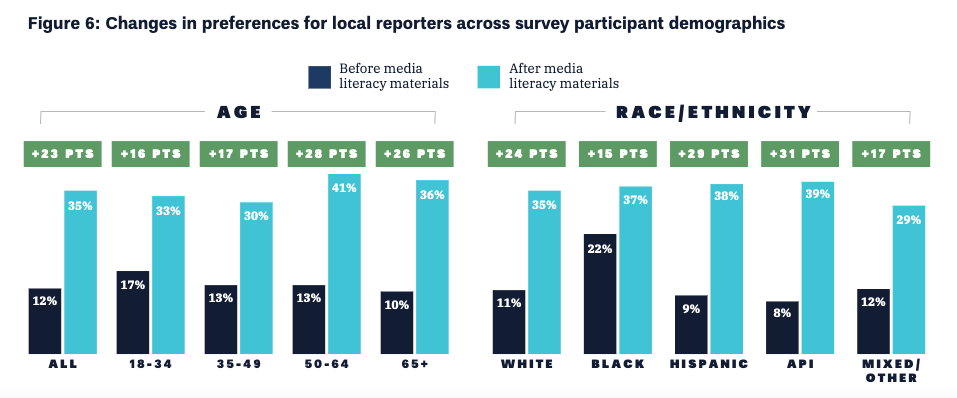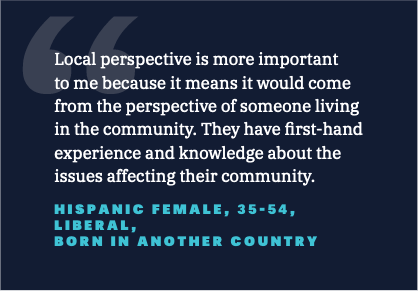
Three quarters of US news audiences prefer international news produced by local reporters, according to recent research commissioned by Global Press (GP).
GP is an independent, non-profit newsroom that has 37 news bureaus spread across 12 countries, including in Asia, Africa and Latin America.
It typically serves local news readers, as it hires only local women journalists who are not required to speak or write in English. It, however, started to see a demand coming from the US for its atypical brand of international news. It now has a network of interpreters, copy editors, translators and fact-checkers who rework copy into English.
The organisation seeks to "disrupt rote narratives" in some of the least covered countries on the planet, says Laxmi Parthasarathy, chief operating officer of GP speaking on the Journalism.co.uk podcast.
Changing the narrative
Countries like Mongolia offer more nuanced stories than reindeer, eagle herding and climate change - the three predominant topics in the international media. For instance, one of GP's reporters broke a six-month-long investigation into forced virginity testing in high schools, a practice banned by the UN but still practised in the country.
Haiti has become synonymous with disaster-driven reporting and political unrest. GP has recently set up one of its latest news bureaus there, deliberately outside of the capital.
"We have a real opportunity to provide more holistic coverage from Haiti in a meaningful way, so we specifically targeted our recruitment to be outside of Port-au-Prince in both the north and west of the country," explains Parthasarathy.
"Part of the responsibility for news organisations is not just to be there when the hurricane hits."
Its own research suggests there is plenty of appetite amongst Western audiences for an alternative to the traditional "parachute journalism". US audiences' preference for local reporters increases up to threefold depending on age and ethnicity after accessing media literacy documents (learning the difference between parachute journalism and local community journalism).

In particular, seven in 10 preferred precise and dignified reporting, especially around headlines and "equitable vocabulary".

'Don't force the readers to make assumptions' is one of the lessons GP newsrooms live by. That, and demystifying the newsgathering process, like explaining what a fixer is or where a story is being filed from, makes a big difference.
"What we see is unprecedented source access and trust in the communities that we’re covering. That means better interviews and stories," she continues.
Getting boots on the ground
GP sets up news bureaus in countries with news deserts, saturated media markets, transitioning political environments and unfree societies. Sometimes multiple criteria can be met.
Ultimately, that means there is an opportunity to change a global narrative; serve local audiences where access to quality information is limited; remove barriers to developing journalists; and elevate domestic employment practices.
The newsrooms must be filled with local people, though. In many of these countries, there might be limited access to the internet and so it is important to make the process as simple as possible.
In Mongolia, GP received 1,000 applications for seven reporter positions. In Puerto Rico, that was 700 applications for five reporter positions. Some successful candidates switched careers to become journalists - one was a former epidemiologist. Not requiring English certainly helped funnel in applications, but it also helped to go directly into the community.
"[In Puerto Rico], we literally drove around the island dropping postcards in salons, bars and community centres just to make sure it's not just going to a Facebook community or a set of people in journalism associations.
"It meant radio advertisements in Spanish, accessing local university radio stations, and making sure we had a diverse reach in this information."
Successful applicants then receive full training from Global Press Institute Online, a pandemic-inspired move to bring the curriculum online. It covers the basics of fact-checking, photojournalism, sourcing and journalist safety - a critical concern amongst women journalists.
There is a second component about editorial coaching and getting their first stories published. Reporters are fully paid for participation and are guaranteed a paid position upon completing the programme.
Free daily newsletter
If you like our news and feature articles, you can sign up to receive our free daily (Mon-Fri) email newsletter (mobile friendly).
Related articles
- Covering elections: how to not let politicians steal the narrative
- Trust is not a "useless metric" - we just need to understand it better
- How MyLocal Lincolnshire and Ping! are innovating local media
- 'Collaboration over competition' is the way forward for public interest media
- Five ideas to boost community listening projects









